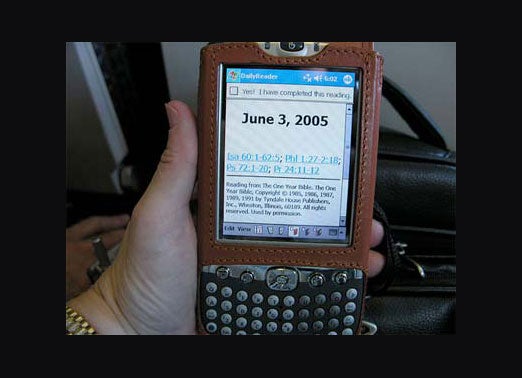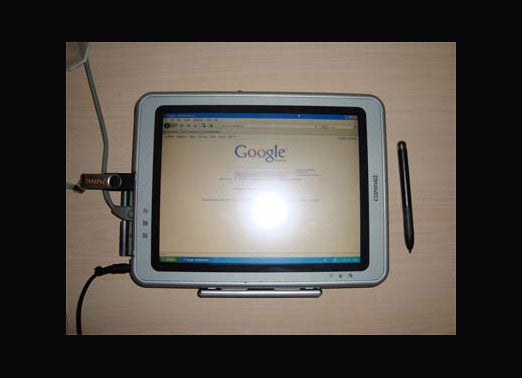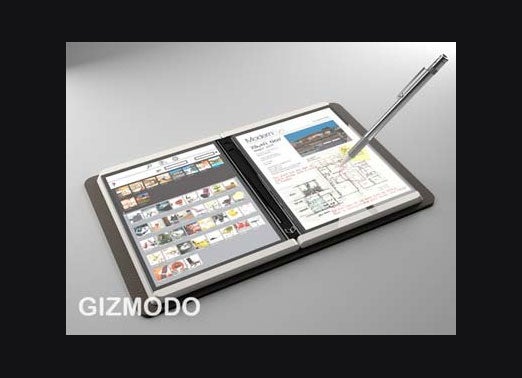Take a tour through Microsoft's forgettable, regrettable mobile OS history.
Microsoft’s Windows Phone 7 is coming, and the buzz is good! A lot of tech observers are licking their chops for another entrant into the mobile market, with the added potential bonus of Microsoft and Apple duking it out anew, with the roles of industry giant and plucky upstart reversed.
Except … Windows Phone 7 isn’t the first much-heralded attempt by Microsoft to enter into the world of mobile OSes. The company that has dominated the PC operating system market for pretty much as long as that market has existed has never managed to find long-term success in anything smaller than a laptop, with its mobile offerings generally underwhelming customers — when they’ve ever made it out of the planning stage. And so, to add a cautionary note to the largely positive Windows Phone 7 coverage, we offer this tour through Microsoft’s mobile OS history — history that folks in Redmond have to hope won’t repeat.
Photo courtesy of viagallery
Pocket PC/Windows Mobile

This entry is certainly the least floppy, least vapor-y of the bunch for this slideshow. There’s been a continuous series of Windows CE-based devices — PDAs and phones — released over the past decade, and they’ve sold respectively. In typical Microsoft fashion, they’ve come out under a dizzying and sometimes baffling array of brands, including “Pocket PC,” “Windows Phone,” and “Windows Mobile Classic.”
But if this branch of the Windows family tree can’t be called a failure, it can’t really be called a success, either. Certainly Windows Mobile never achieved the hegemonic status that its desktop cousin took for granted. And in recent years the platform has stagnated while the iPhone OS and other smartphone operating systems have shaken up the market. Windows Phone 7, though a direct descendent of this product line under the covers, will featured a completely revamped user experience in an attempt to catch up.
Picture courtesy of Old Shoe Woman
Windows XP Tablet Edition

In 2002, when Windows XP was still a basically brand new desktop OS, Microsoft unveiled with much fanfare a version for tablets, a sort of souped-up, modernized version of Windows for Pen Computing. Complete with handwriting analysis and voice recognition, this OS seemed to have everything it needed to power fully-featured computers that also happened to be tablets.
But things didn’t work out that way. The hardware for these machines often turned out to be underpowered and too warm for comfortable lap use. Despite the nods to other forms of input, Windows XP remains in essence a mouse-and-keyboard driven OS. And, in a recent New York Times op-ed, Dick Brass, who spearheaded the Tablet PC initiative, claimed that he was undermined in various ways by internal Microsoft politics; for instance, he claims the Office group’s VP refused to modify the all-important office suite so that it would work more naturally with pen-based input.
Windows XP for Tablet Edition saw a refresh in 2005, but the absence of Windows 7 Tablet Edition pretty much tells you what you need to know about Microsoft’s current dedication to the project.
Picture courtesy Ruben Diaz Alonso
Future vapor: Project Courier and Project Pink

Last fall, an unexpected furor arose as Gizmodo ran pictures and video of what it called Microsoft’s secret tablet. Dubbed “Courier,” it was a radical take on the tablet, a book-like computer with two screens attached with a hinge and operated by, yes, a stylus. But Courier failed to appear at CES, and despite Gizmodo’s reporting as if it were a done deal, Microsoft has breathed not a word about it. Current rumors say it will emerge sometime in mid-2010. Slightly more confirmed, but significantly fuzzy, is the Microsoft Pink. It’s been rumored for more than a year to be a joint Microsoft-Verizon answer to the iPhone. To be built on a Windows CE variant, and be aimed at users who are focused on social networking and instant messaging. The project is largely staffed with employees who came into Microsoft with the acquisition of Danger, maker of the once-trendy Hiptop. The weird overlap between Pink and Windows Phone 7 may have a lot to do with Microsoft’s culture of autonomous and sometimes competing business units.
Picture courtesy Gizmodo








